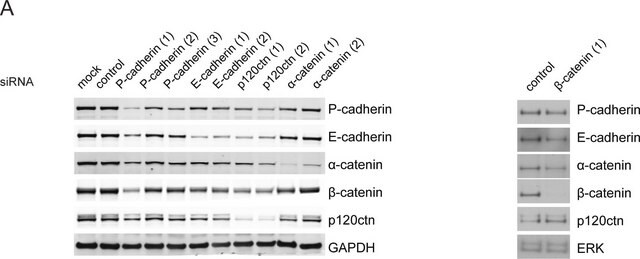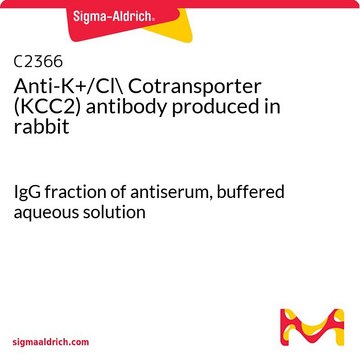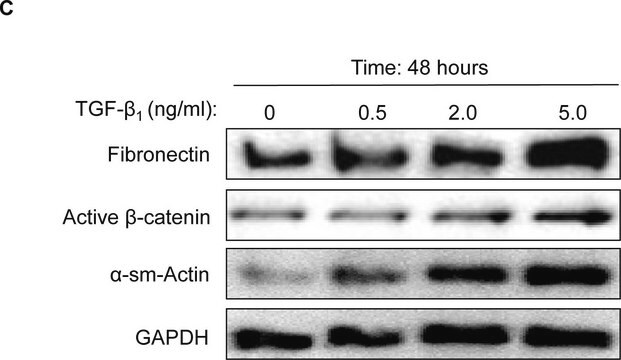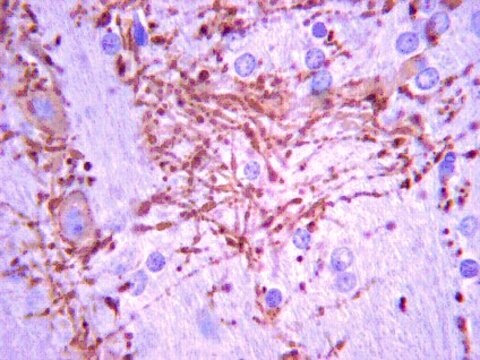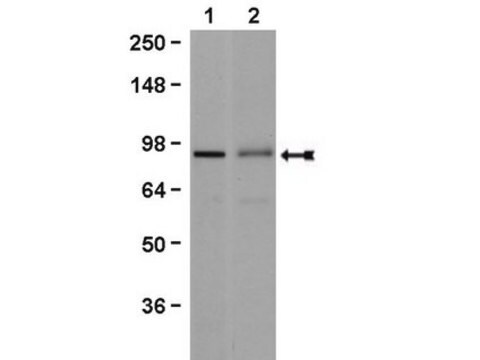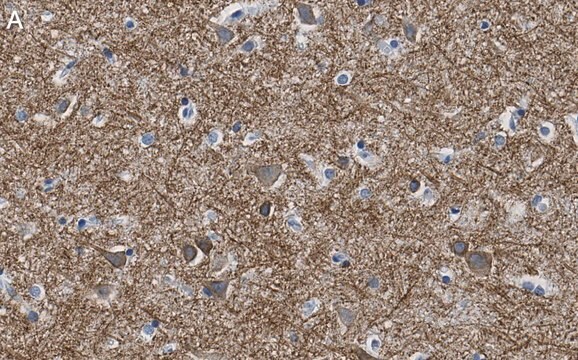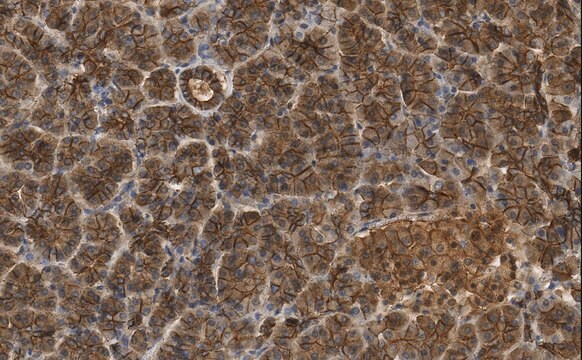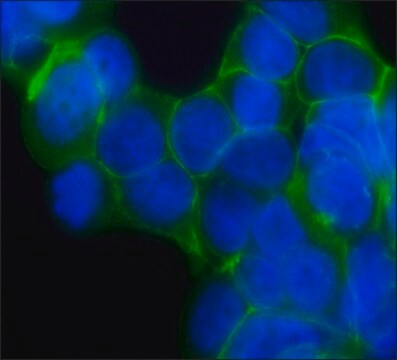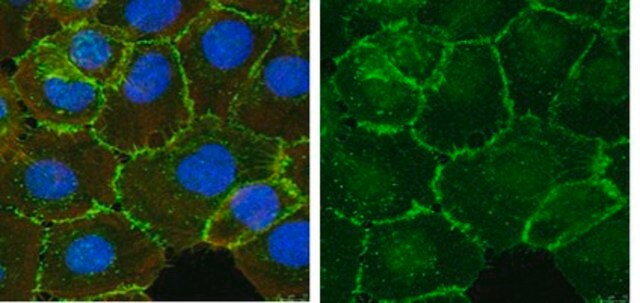07-432
Anti-K+/Cl- Cotransporter (KCC2) Antibody
Upstate®, from rabbit
Synonim(y):
Electroneutral potassium-chloride cotransporter 2, Erythroid K-Cl cotransporter 2, Neuronal K-Cl cotransporter, electroneural potassium-chloride cotransporter 2, solute carrier family 12 (potassium-chloride transporter), member 5
About This Item
Polecane produkty
pochodzenie biologiczne
rabbit
Poziom jakości
forma przeciwciała
purified immunoglobulin
rodzaj przeciwciała
primary antibodies
klon
polyclonal
reaktywność gatunkowa
rat, canine, dog
producent / nazwa handlowa
Upstate®
metody
immunocytochemistry: suitable
western blot: suitable
izotyp
IgG
numer dostępu NCBI
numer dostępu UniProt
Warunki transportu
dry ice
docelowa modyfikacja potranslacyjna
unmodified
informacje o genach
dog ... Slc12A5(485905)
rat ... Slc12A5(171373)
Opis ogólny
Specyficzność
Immunogen
Zastosowanie
This antibody has been reported by an independent laboratory to detect K+/Cl- Cotransporter (KCC2) in Madin Darby Canine Kidney (MDCK) cells at 1:200 dilution.
Neuroscience
Ion Channels & Transporters
Jakość
Western Blot Analysis: 1.0 µg/mL of this lot detected K+/Cl- Cotransporter (KCC2) in rat brain membrane preparations.
Opis wartości docelowych
Postać fizyczna
Przechowywanie i stabilność
For maximum recovery of product, centrifuge the vial prior to removing the cap.
Handling Recommendations: Upon first thaw, and prior to removing the cap, centrifuge the vial and gently mix the solution. Aliquot into microcentrifuge tubes and store at -20°C. Avoid repeated freeze/thaw cycles, which may damage IgG and affect product performance. Note: Variabillity in freezer temperatures below -20°C may cause glycerol containing solutions to become frozen during storage.
Komentarz do analizy
Rat brain membrane preparation.
Inne uwagi
Informacje prawne
Oświadczenie o zrzeczeniu się odpowiedzialności
Nie możesz znaleźć właściwego produktu?
Wypróbuj nasz Narzędzie selektora produktów.
polecane
Kod klasy składowania
10 - Combustible liquids
Klasa zagrożenia wodnego (WGK)
WGK 1
Certyfikaty analizy (CoA)
Poszukaj Certyfikaty analizy (CoA), wpisując numer partii/serii produktów. Numery serii i partii można znaleźć na etykiecie produktu po słowach „seria” lub „partia”.
Masz już ten produkt?
Dokumenty związane z niedawno zakupionymi produktami zostały zamieszczone w Bibliotece dokumentów.
Nasz zespół naukowców ma doświadczenie we wszystkich obszarach badań, w tym w naukach przyrodniczych, materiałoznawstwie, syntezie chemicznej, chromatografii, analityce i wielu innych dziedzinach.
Skontaktuj się z zespołem ds. pomocy technicznej